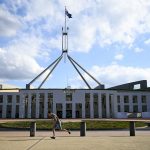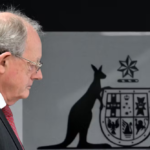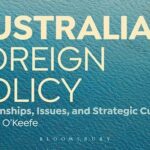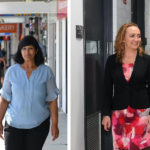Preserving the power of ancient Indigenous oral traditions
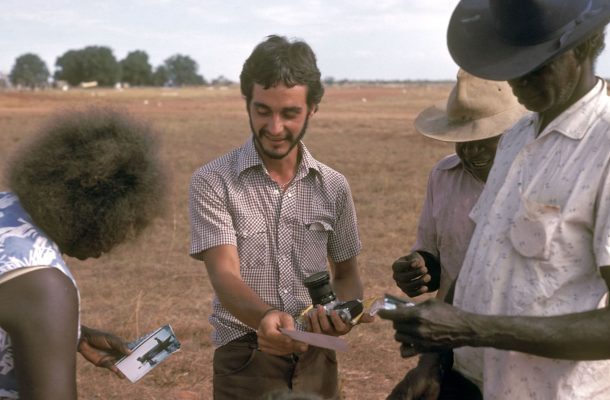
When John Bradley was 19, he left his parents’ farm in country Victoria to teach at an Indigenous primary school at Borroloola on the Gulf of Carpentaria. The posting changed his life. Thirty-eight years later, he’s still travelling to Borroloola, still thinking and writing about all that he’s learned from the Yanyuwa people who live on the Gulf.
Today, Dr Bradley is deputy director of the Monash Indigenous Studies Centre, and an associate professor. He’s also a founder of the Monash Country Lines Archive, an animation program that records stories in Indigenous languages, often using 3D techniques that can create the country as it looked before colonisation.
In 1980, when he first arrived in Borroloola, the town was even more isolated than it is today. “No telephones,” he recalls. “You only had power for six or seven hours a day off a community generator. There were only 20-odd white people in the town – the Indigenous population at the time would have been four or five hundred.”
In the classroom, he taught with the help of a local assistant, who understood the local lingo and who knew everyone.
“I became the student,” Dr Bradley recalls. “All the kids spoke variants of what you might call Aboriginal English and Kriol, but with a very, very large sprinkling of imperative verbs, nouns and kinship terms that were derived from the older-based languages.”
The other white teachers were enthusiastic drinkers with little interest in Indigenous people. Dr Bradley was more drawn to the Yanyuwa, who would invite him into the bush, or onto the Sir Edward Pellew group of islands in the Gulf, which are also part of their country.

Jemima Miller
“I realised that if I was going to survive there, I was going to have to learn the language,” he says.
Slowly, painstakingly, he taught himself Yanyuwa by creating his own word lists and grammar, and by involving himself in the community.
“Two of my most important teachers were Jemima and Don Miller … (and) sharing photos was in those days a great way to learn language … practise, laugh a lot and be encouraged by ones teachers,” he says.
Central figures
He says Jemima Miller and Don’s sister, Dinah Norman, have been central to the 39 years of research done at Borroloola, and in particular the beginning of the animation series that led to the Monash Country Lines Archive.
They’ve also been central in the development of the material that has been used in teaching at Monash Indigenous Studies Centre, Dr Bradley says.
He discovered that “Indigenous languages are a repository of immense detail about this place we call Australia”.
The sea-faring Yanyuwa have a word for sunbeams shining through the water, for instance, and another for the shadows of clouds passing over the water’s surface. They have 27 different words for dugong, which is one of their traditional food sources.
Yanyuwa also happens to be “one of the only languages we know of that has separate dialects for men and women. So as a man you have to speak as a man, but you have to learn to listen to the way the women speak, and the women’s version is much more complex.”
By learning Yanyuwa, Bradley became immersed in a different way of seeing the world.

Dinah Norman
“I loved it. It really made me understand that here were languages that had no relationship to English, no relationship to any other language that had ever been brought to Australia from other places.”
Aside from the rich vocabulary, Bradley was also impressed by “the density of place names” that were used to describe Yanyuwa country, forming a mental map. He’s since documented all the Yanyuwa place names in an illustrated atlas.
The third thing that struck him when learning Yanyuwa was “the notion of kinship, as it was expressed, relating to country and sea”.
“They included both what you might call human kin and non-human kin,” he says. “So that all the plants and animals and birds and fish and natural phenomena were equally a part of the kinship system as humans.”
As he learned, Bradley was adopted by the Yanyuwa. He says Yanyuwa, like many Indigenous languages “has no word for friend, because you are all family”.
When you’re incorporated into the family system “everyone knows what they call you”, he explains. “There are obligations about how kin relate to each other, so you are no longer just a wandering white ghost.”
Family is “one of those incredible markers of indigenous culture”, he says.
“The rules of kinship, of family, exist Australia-wide. Even in places like Melbourne, where we think everything has disappeared, this understanding of family, and what family entails, has held Indigenous people together.”
Few remaining
When he arrived in the Gulf there were about 260 Yanyuwa speakers. Today, only three women elders remain who use Yanyuwa “as an everyday medium of communication, who understand all the variant dialects, who can still compose songs in it”.
They speak Yanyuwa “all the way through”, but a handful of others are able to “hear” it, and can create sentences in it. Dr Bradley says he speaks fluently, but not as well as the old women.
“They realise more than anyone else what’s at stake,” when a language is lost, he says. An entire culture disappears, a way of life, a way of talking about Australia.
 Dinah Norman and Dr Bradley proof some texts for the now-published two-volume Yanyuwa encyclopedia.
Dinah Norman and Dr Bradley proof some texts for the now-published two-volume Yanyuwa encyclopedia.
Dr Bradley can speak Garrwa too, although not as fluently as Yanyuwa – the former’s country is situated on the other side of the McArthur River to the Yanyuwa, and their language is completely different – and he can “hear” Marra and some Gurindji, which are also Northern Territory languages. In addition, he speaks Kriol, which he describes as a fusion of the “old, base Indigenous languages and English”, and the fastest-growing Indigenous language in Australia.
Since learning Yanyuwa, Dr Bradley has been attempting to document it, creating a two-volume dictionary-encyclopedia, as well as the atlas. He’s also written about Indigenous ways of knowing, as opposed to scientific ways. His book Singing Saltwater Country explores how songlines describe country in environmental or ecological ways, and also in intimate human ways.
“I don’t think, as Australians, we really understand the depth, the capacity and the power of oral traditions,” he says. “We are so print-centric.” He believes this bias against orally based languages has contributed to their decline – when Bradley first arrived at Borroloola, children were punished for speaking Yanyuwa. “There is this dominating force that English is the only way to know,” he says.
Once, Australia was home to 275 indigenous languages and 600 dialects. Now only 20 languages are considered strong. “That’s 275 different ways to speak about Australia,” Bradley says. “If you really think about that, English is the foreign language in this country.”
This article was published by Lens at Monash University.
Open Forum is a policy discussion website produced by Global Access Partners – Australia’s Institute for Active Policy. We welcome contributions and invite you to submit a blog to the editor and follow us on Twitter, Facebook, Linkedin and Mastadon.








